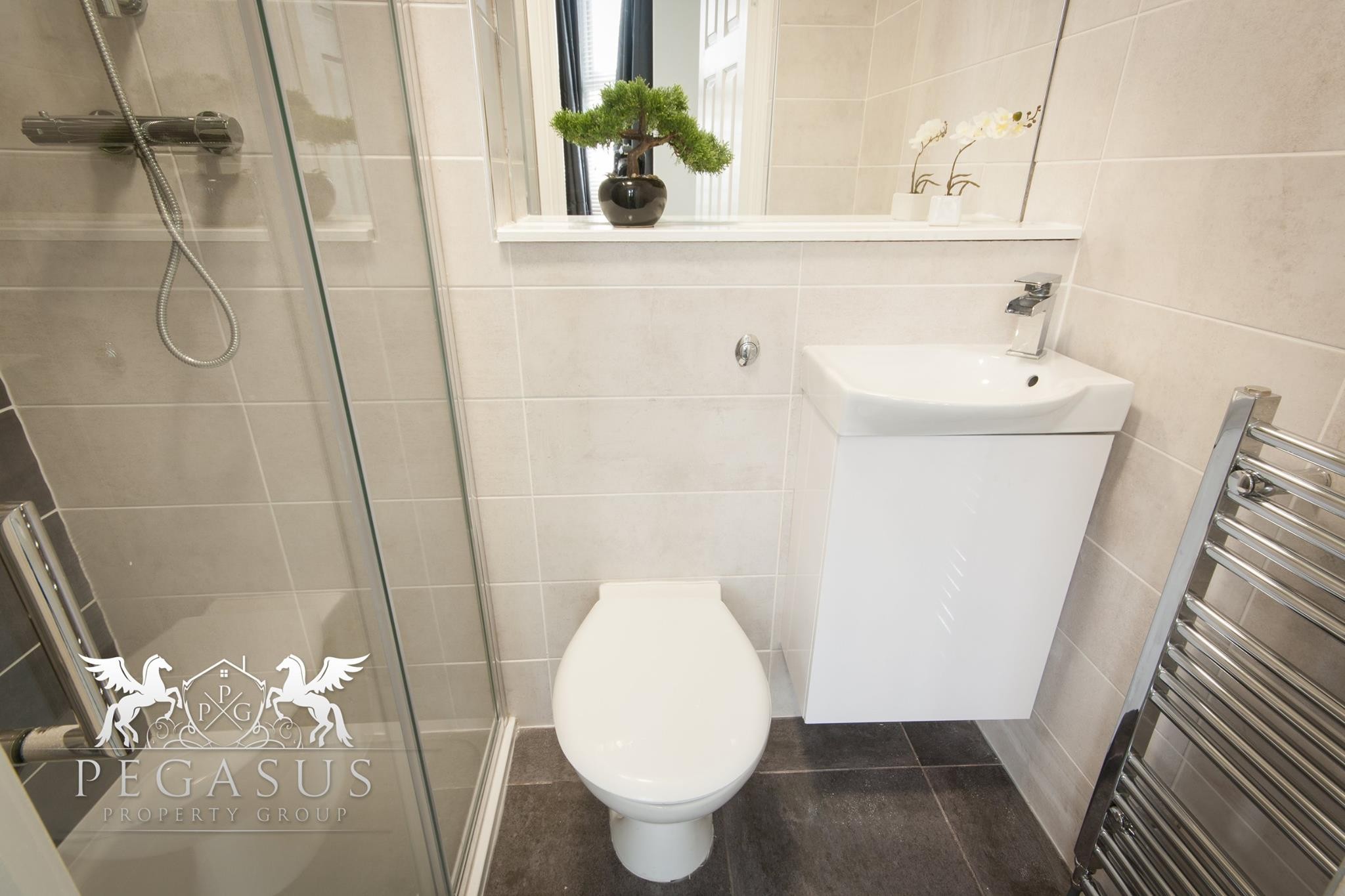
It is widely agreed that adding an en suite bathroom will usually add value to your property, make it more appealing to buyers and, not least, ease the pressure on the family bathroom at busy times.
Experts at Homebuilding and Renovating magazine, whose show will be in London from 22nd to 24th September, say that ideally there should be a toilet on every floor which has bedrooms and, in high value areas, it could be worth adding an en suite to every bedroom.
If you think you don’t have room for an en suite, you may wish to reconsider, as modern innovations mean space can often be found in the most unlikely of situations.
I was reading some comments by Nick Leatherland, of Pegagus Property Developments, on a Facebook group called UK Property Traders and it struck me the information provided, along with the comments, was really useful for anyone considering an en suite, so here’s a summary of the conversation.
Nick says a popular en suite shower configuration requires an internal space of just 1.2m x 2.23m, giving ample room for a 1200mm shower tray, toilet, basin and heated towel rail. Smaller rooms, with smaller shower trays such as 80cm square, are possible, but less desirable and you really need the width to avoid feeling claustrophobic. He says creating a hotel-style en suite shower room of this size, from scratch, costs £2,500-£3,000.
One important factor raised in the discussion – especially as it involved investors and landlords – is future maintenance. Built-in may be beautiful but if the look is too minimalist, you may find you have to rip your lovely en suite apart if something goes wrong.
So, before you take the plunge, here are some expert tips to help you create a beautiful hotel-style en suite shower room, while avoiding future maintenance issues:
Make sure you can access the cistern easily, especially if you install a back to wall toilet.
If in an upstairs room, consider dropping the ceiling below to accommodate pipes and allow easy access from below. Alternatively, you can raise the shower tray (or the entire floor level) to keep the shower trap and pipes above floor level, and incorporate an access point.
Dropping the ceiling means you can also improve insulation and sound-proofing – a big consideration in an HMO.
Shower bar mixers make everything easily accessible for maintenance.
If fitting a concealed thermostatic shower valves, make sure you can get in to maintain it in future.
Only seal shower screens on the outside, so that any trapped water can drain back into the shower tray.
Avoid using elbows, joints and reducers in your pipework – the fewer joins, the fewer opportunities for leaks.
Coloured grout stays fresher looking for longer.
Make sure you incorporate ventilation, to help prevent condensation and mould.
I’ll be honest I’ve never really been a big fan of Facebook, but I have to say the online property investment community can provide some excellent information which is worth everyone knowing about!
Thanks to Andrew Koller-Kovacs, Adam Lawrence, Nick Leatherland, Robert McColl, Ian Read, William Stewart and Craig Zeital for sharing their tips. You can read the full discussion here.
| Maintaining a property - aspect.co.uk | How to avoid a rogue trader - Checkatrade | Guide to carrying out property projects - Grand Designs Live |
 |
 |
 |